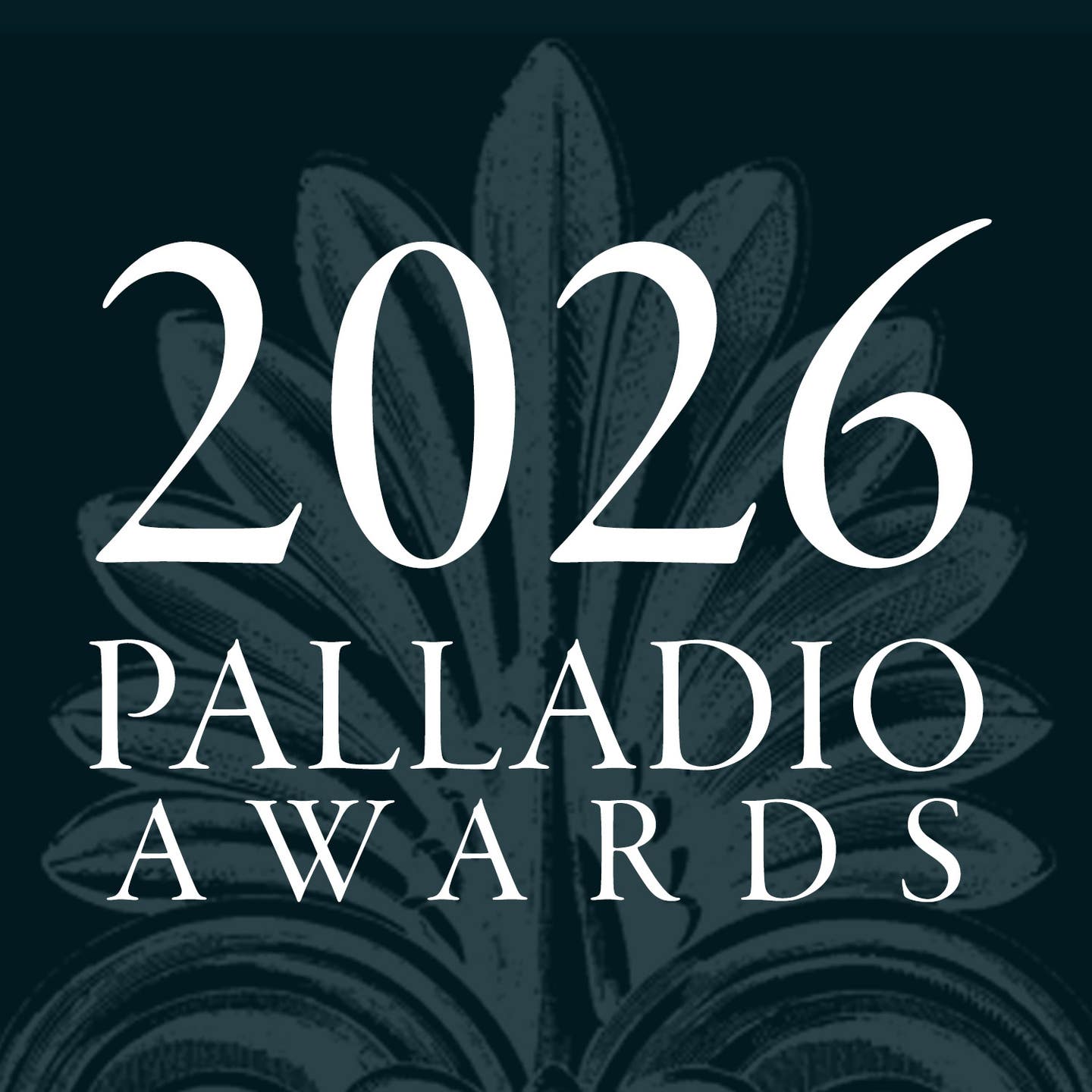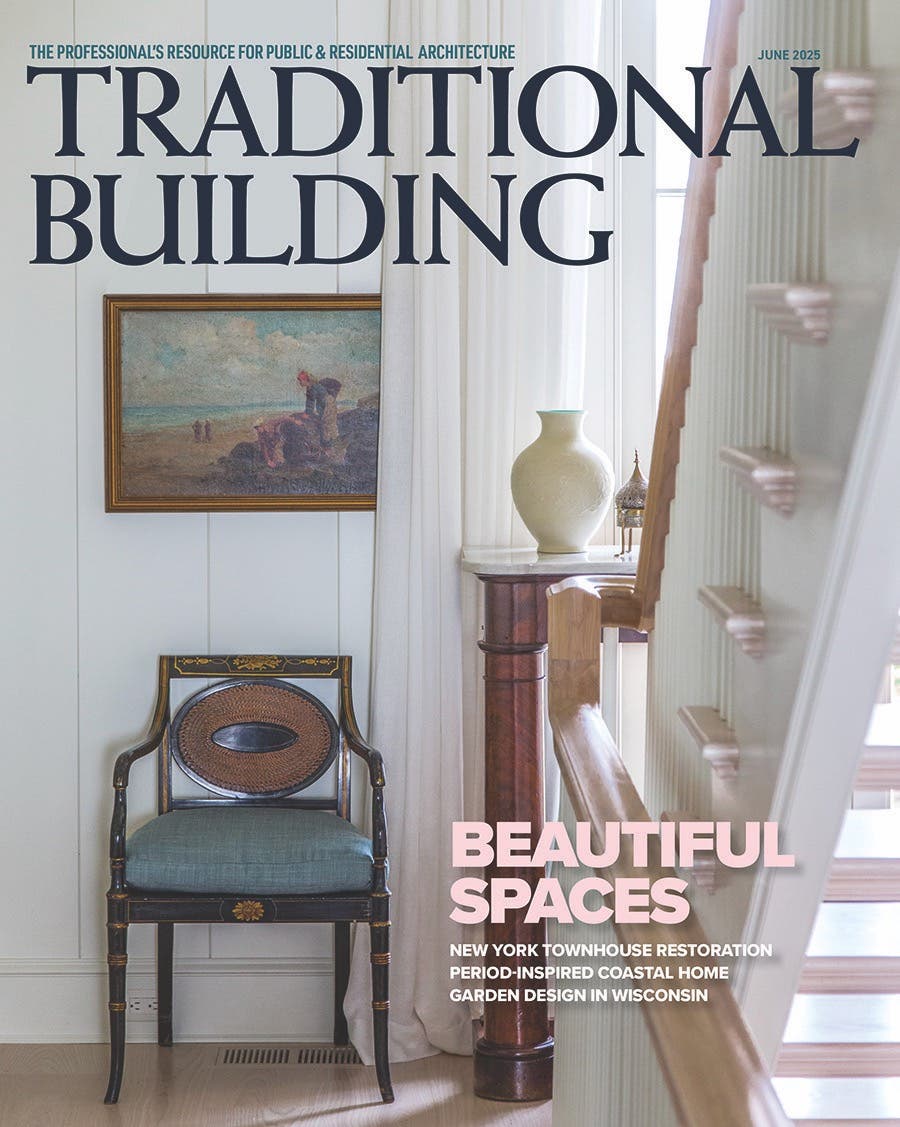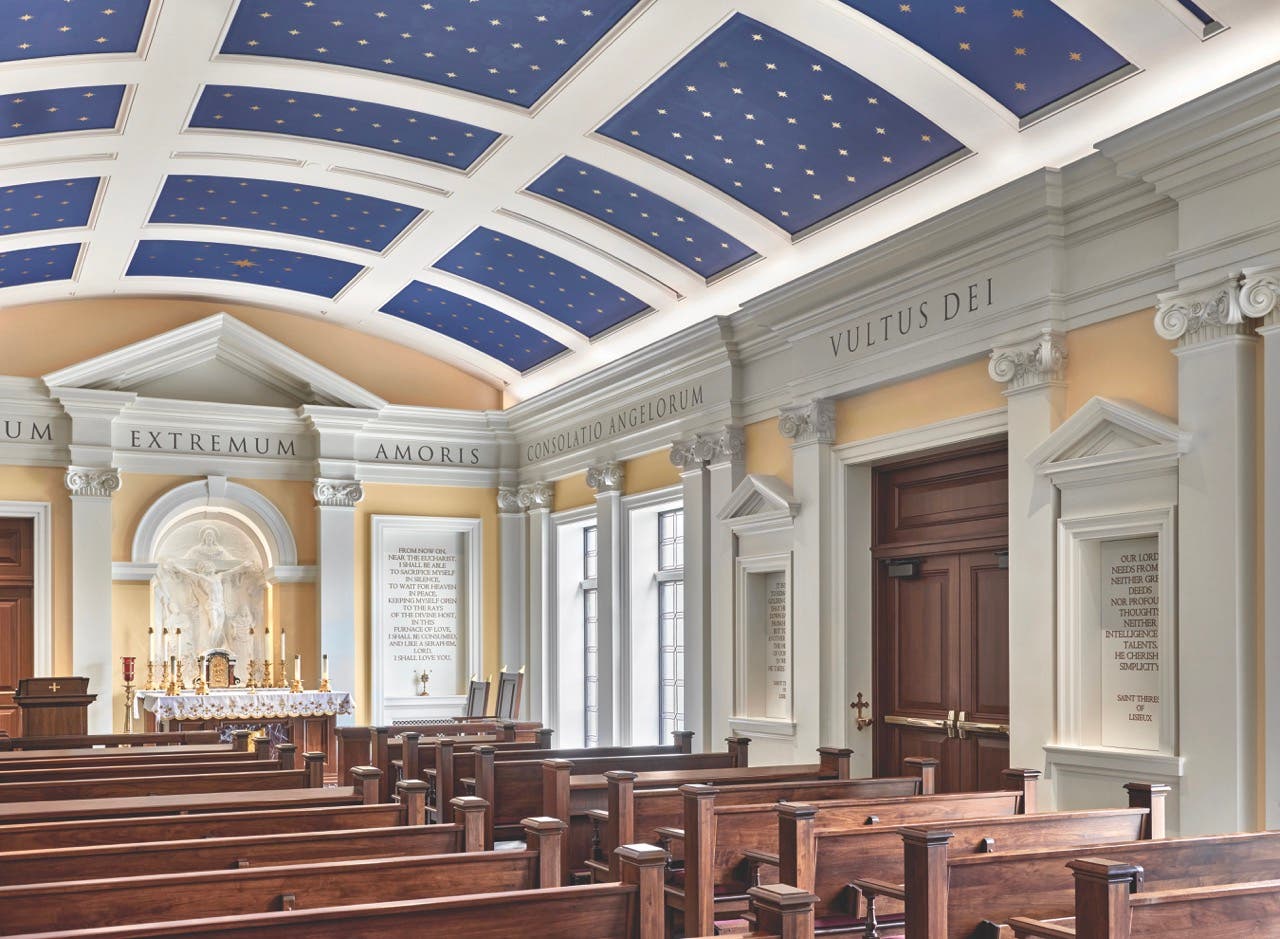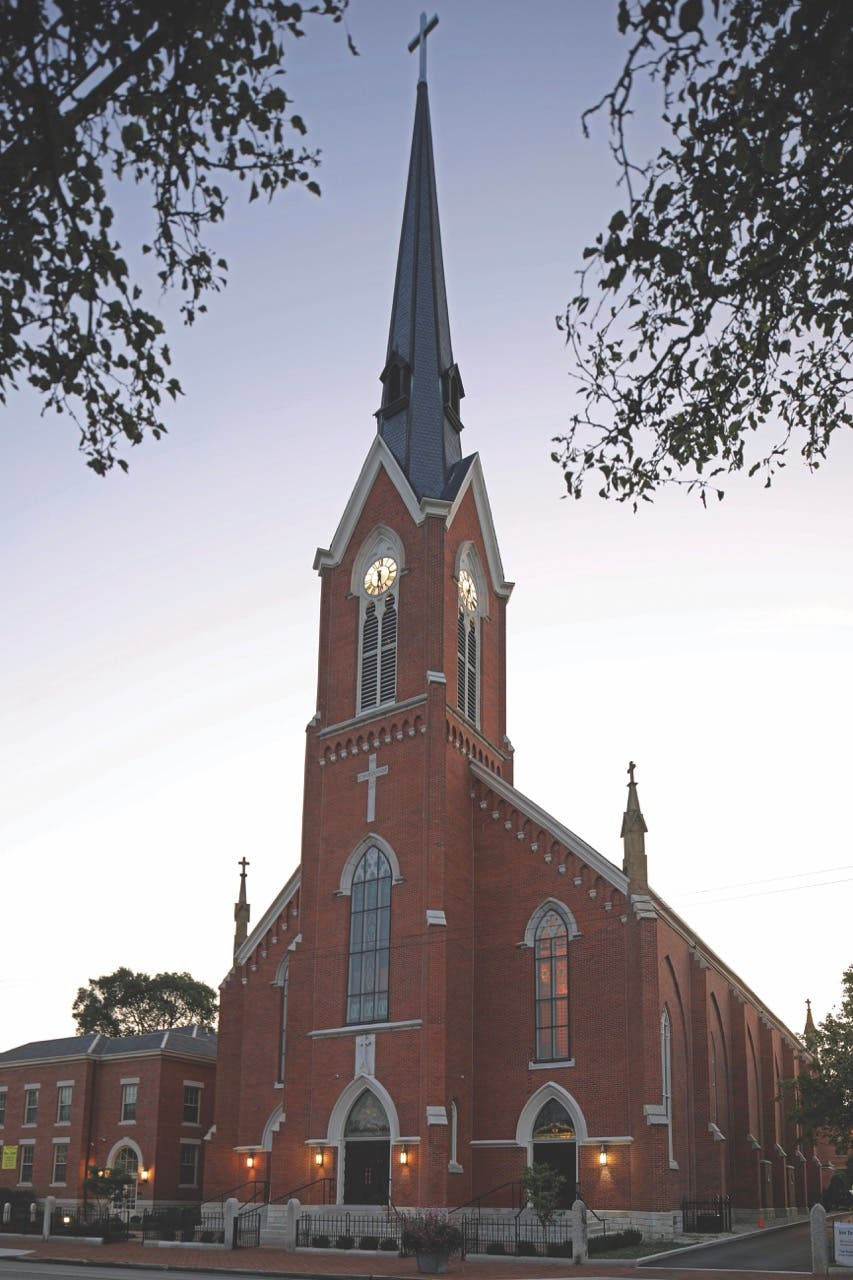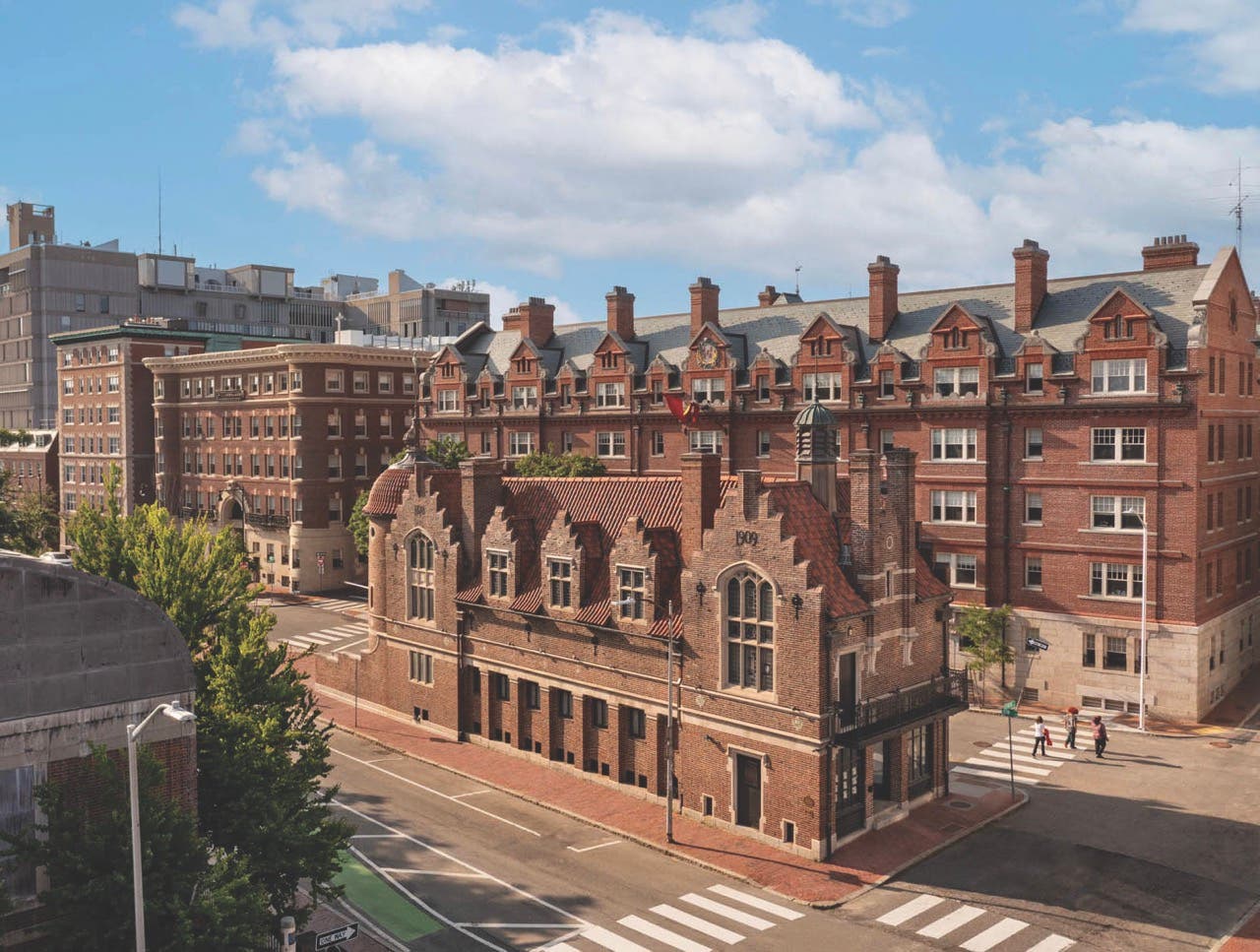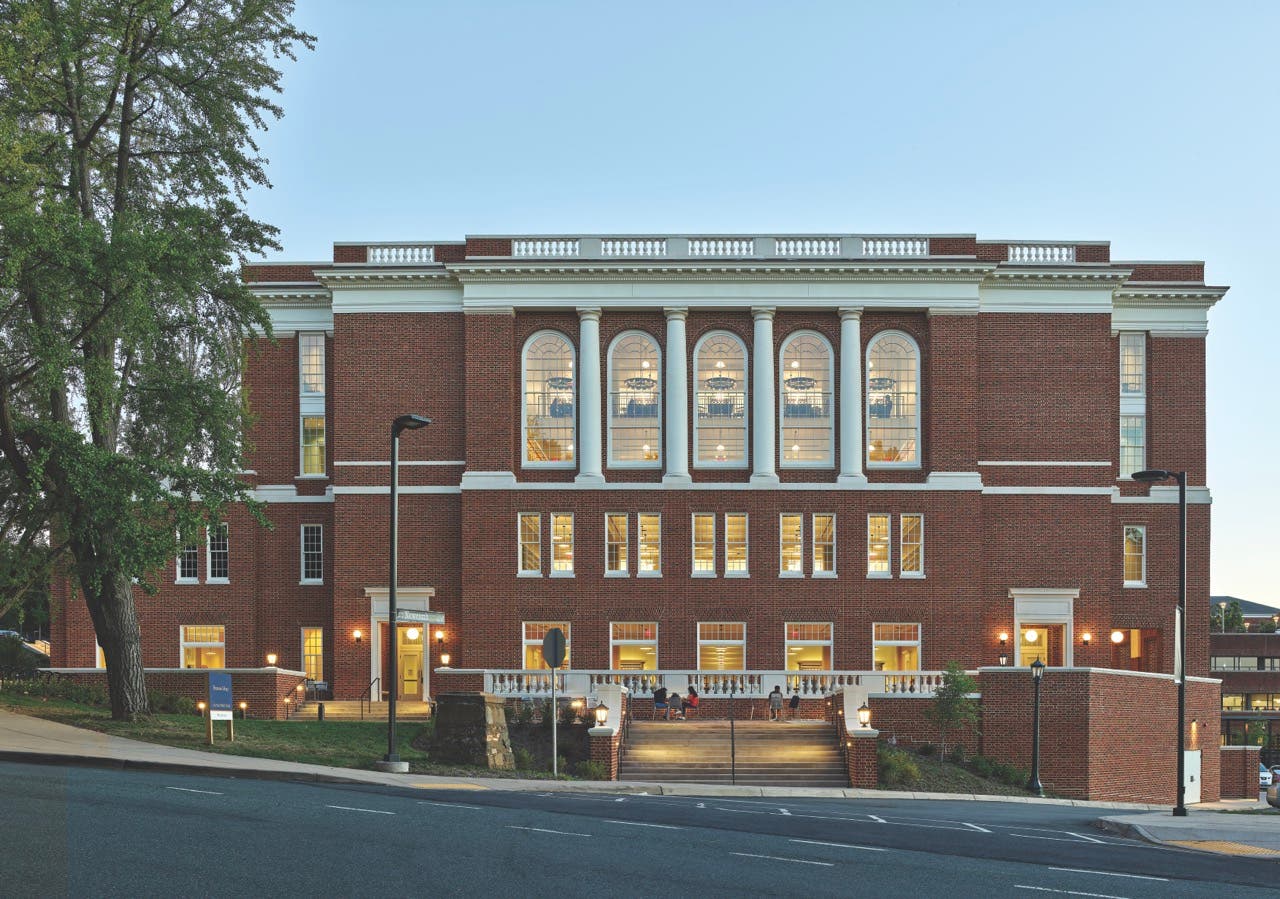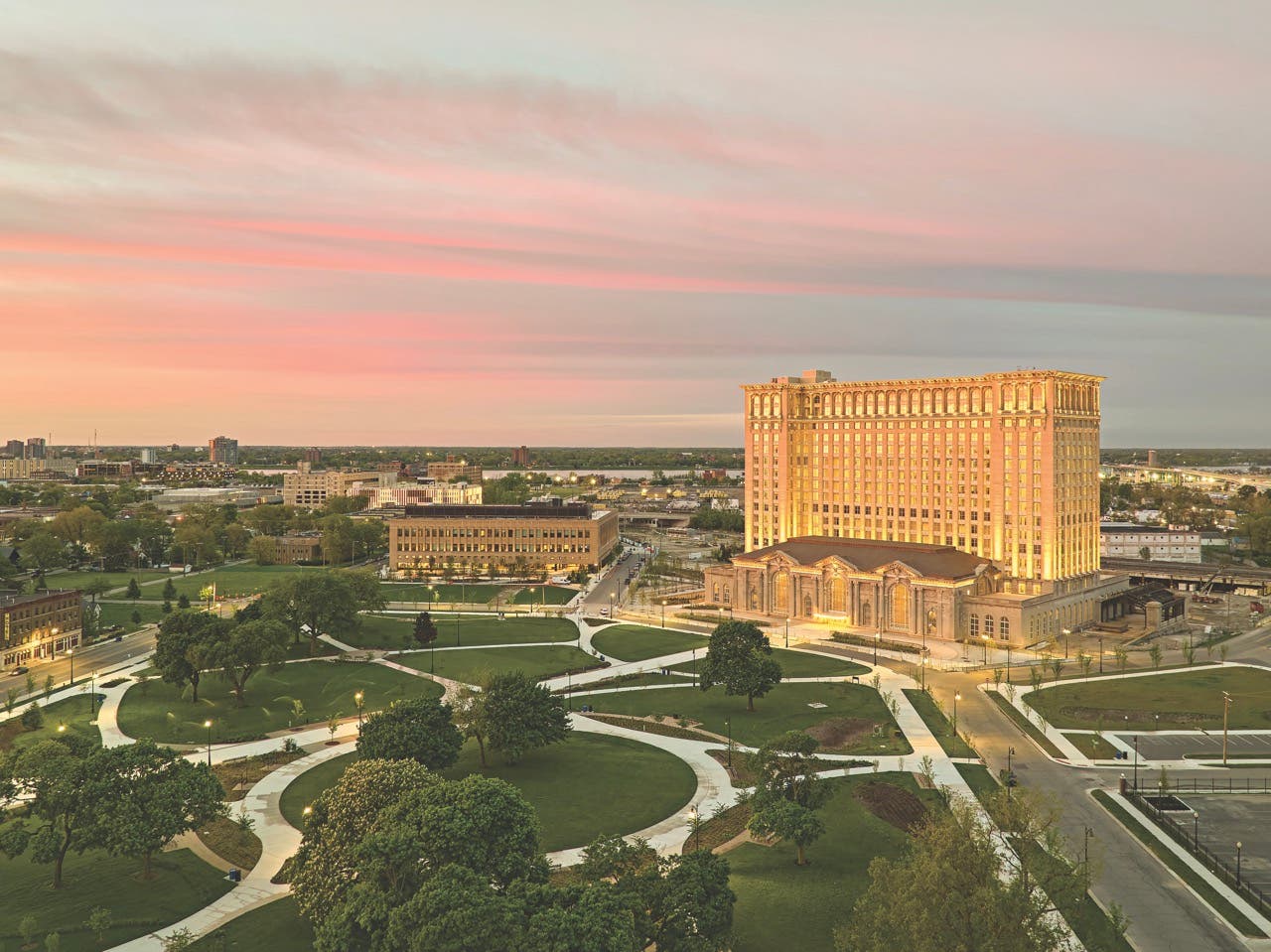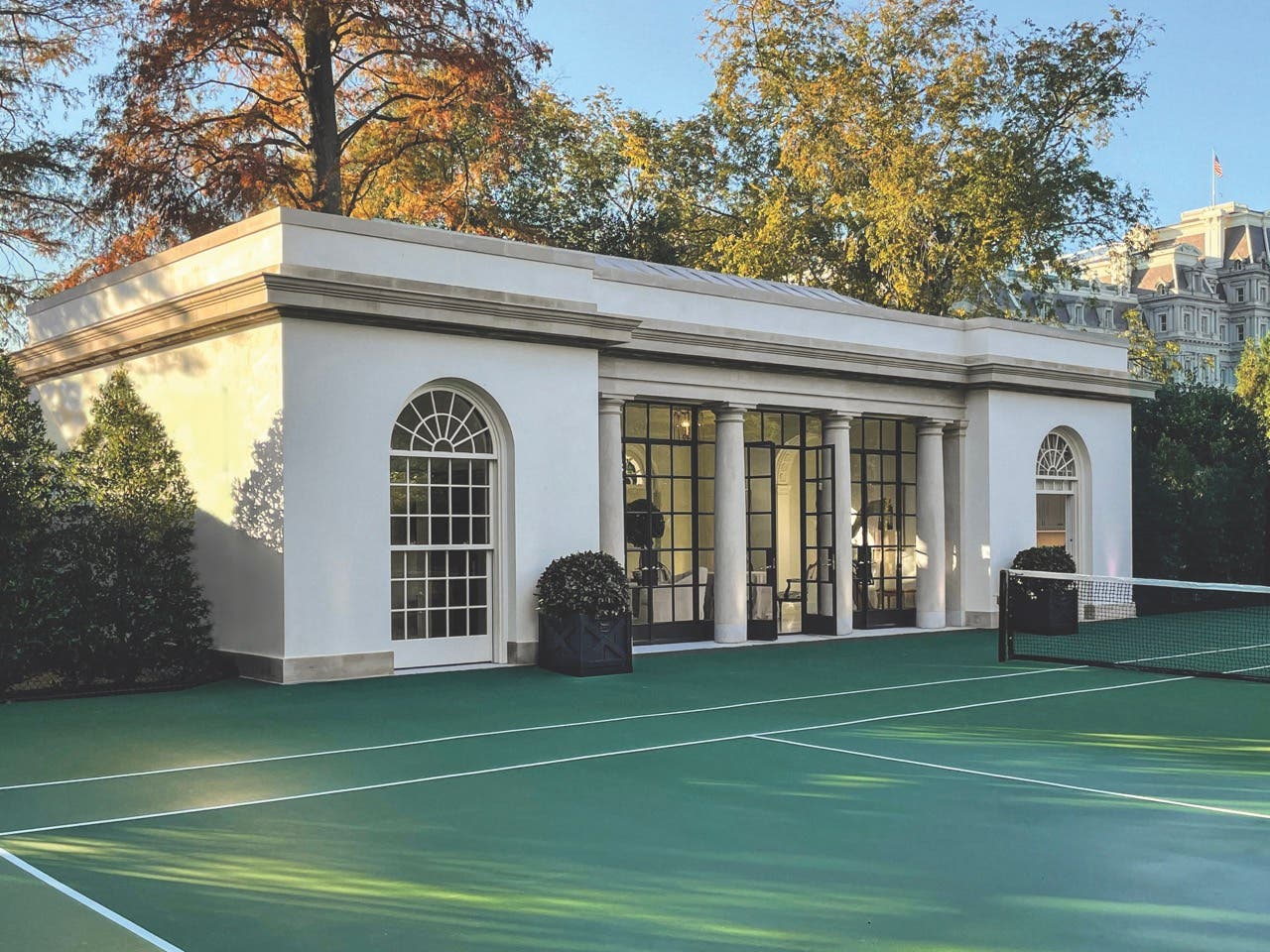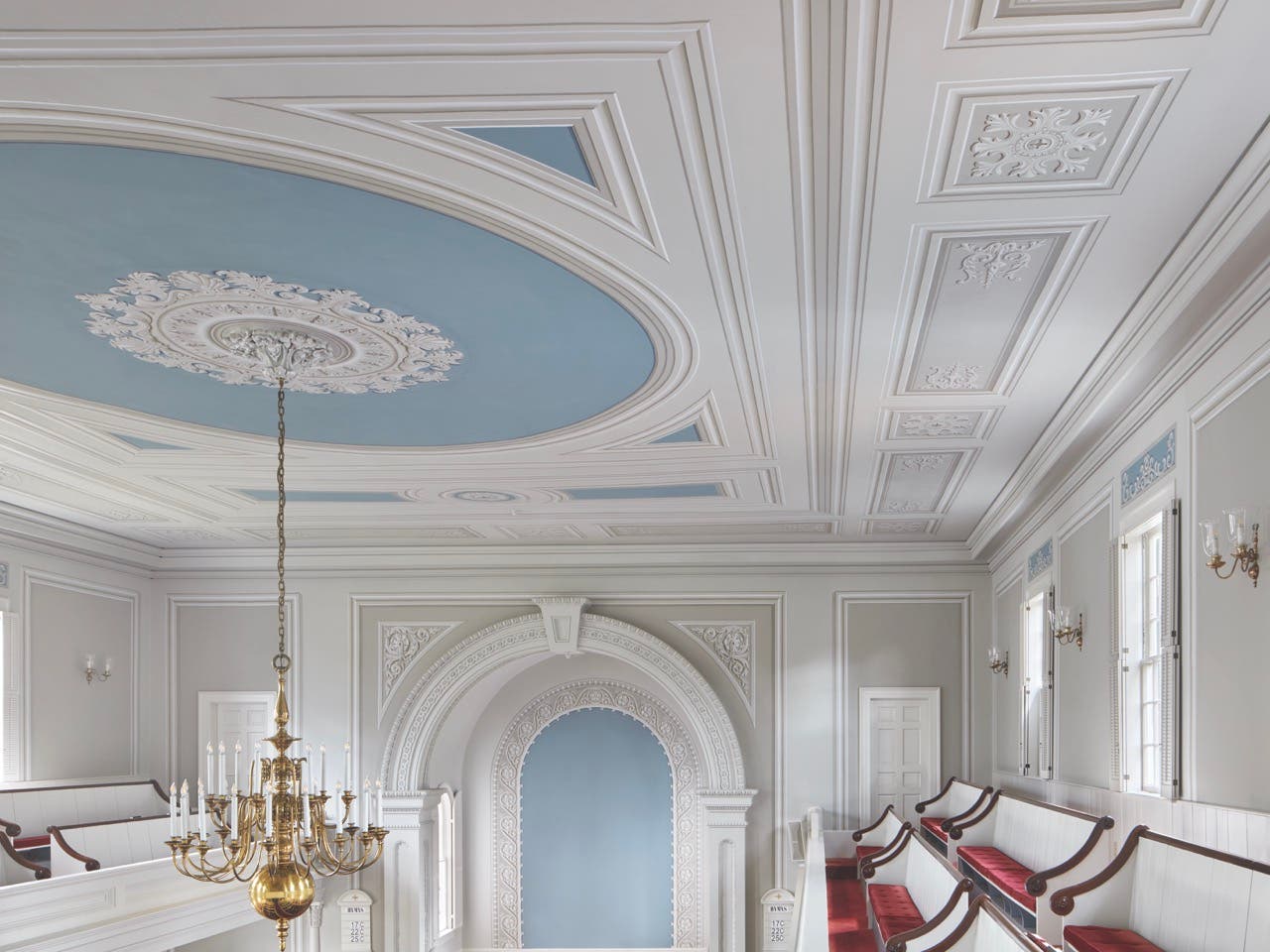
Palladio Awards 2025
First Church of Christ – John Canning & Co., Ltd.
On the outside, the simple white-clapboard Greek Revival church, which settled serenely in Woodbridge, Connecticut, all the way back in 1832, is quintessential New England.
But the inside of the building, which is on the National Register of Historic Places, hints at a more exuberant past: The sophistication of the neoclassical style is paired with Victorian embellishment that includes large trompe-l’oeil wall panels.
“The contrast between the simple exterior and the highly decorated interior creates a delightful surprise,” says David Riccio, a principal at John Canning & Co., Ltd., which handled the restoration. “The trompe-l’oeil is executed so skillfully that it’s easy to believe the painted ‘moldings’ are real. This level of detail is uncommon, especially in an early 19th-century Greek Revival meetinghouse.”
This is not the first award John Canning & Co. has won for craftsmanship at the First Church of Christ: It also received a 2024 Bulfinch Award from the ICAA.
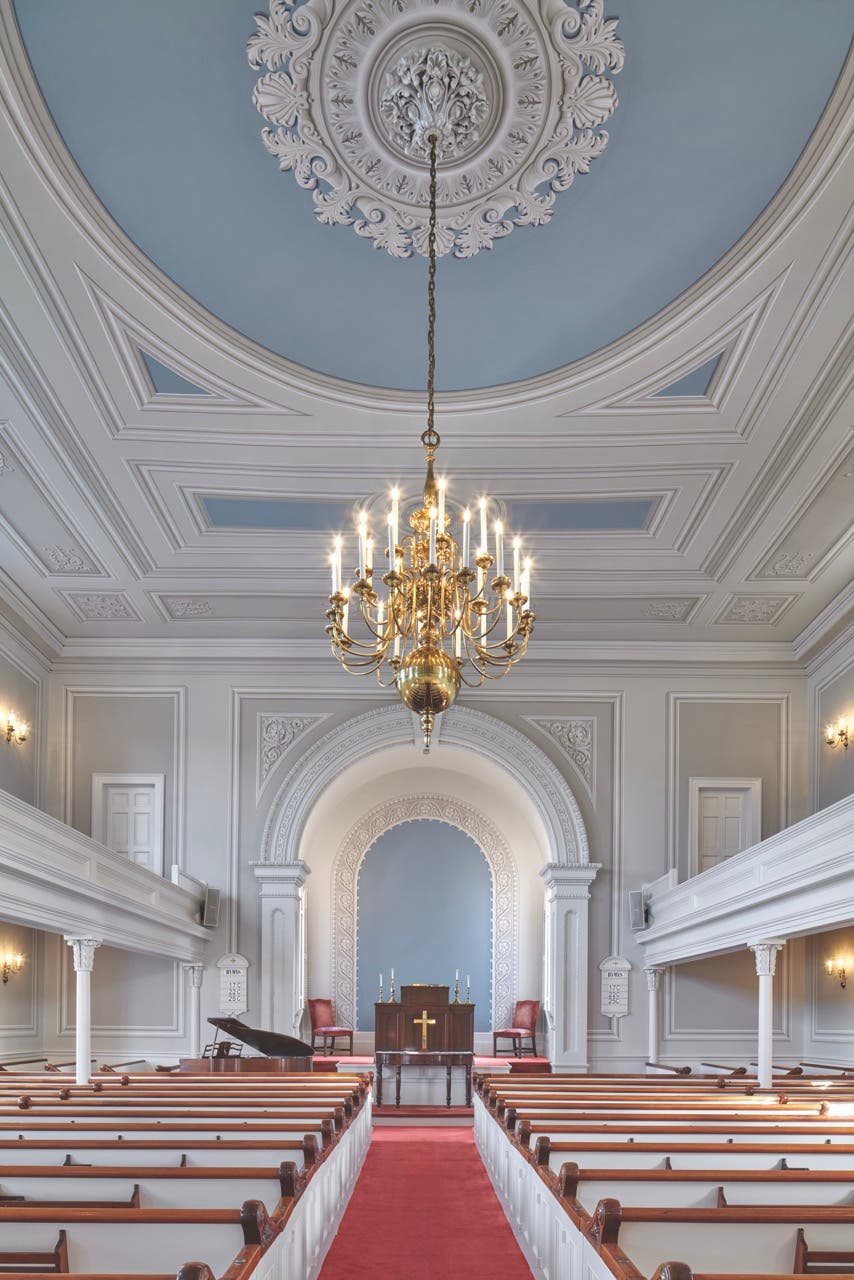
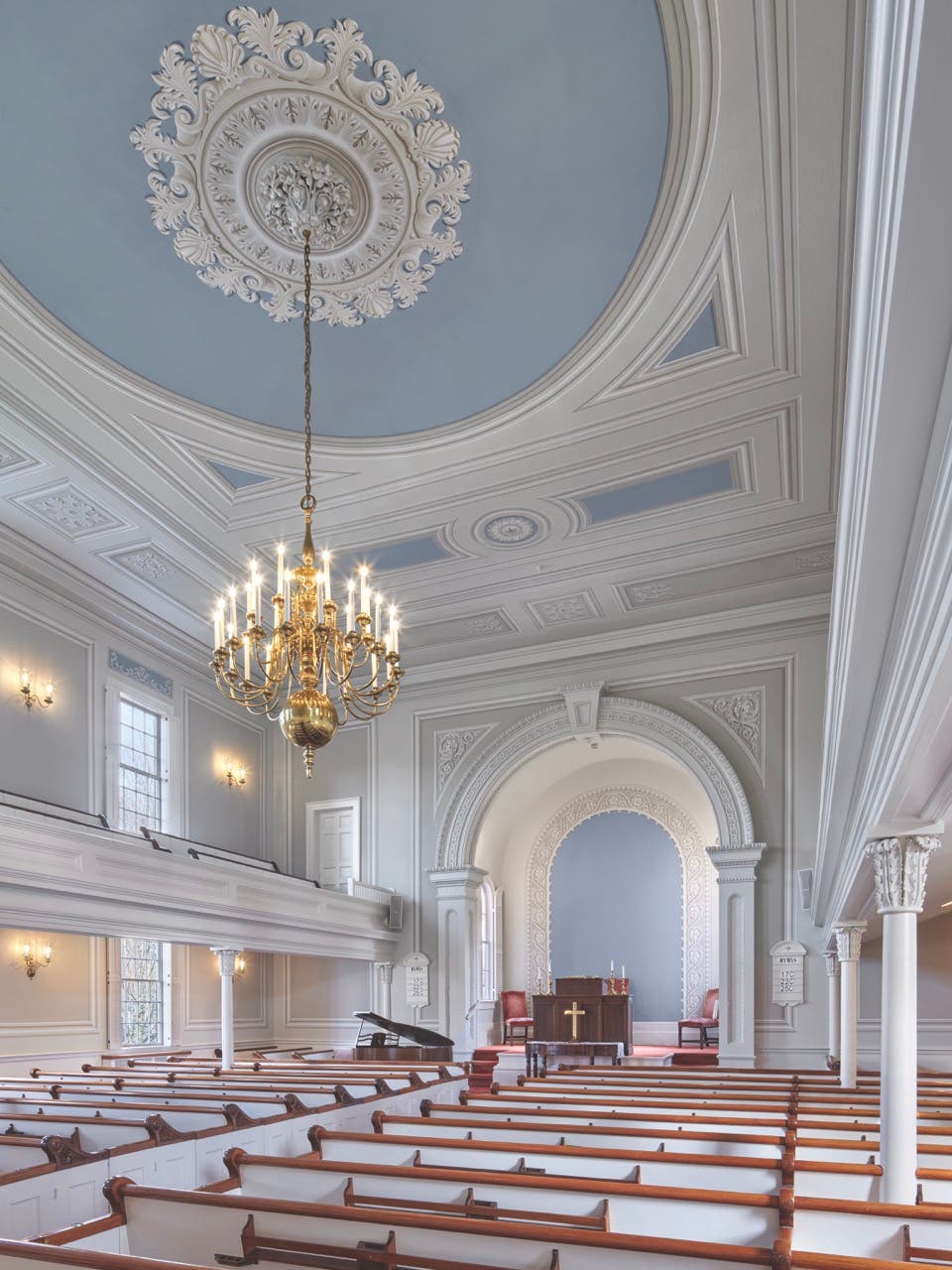
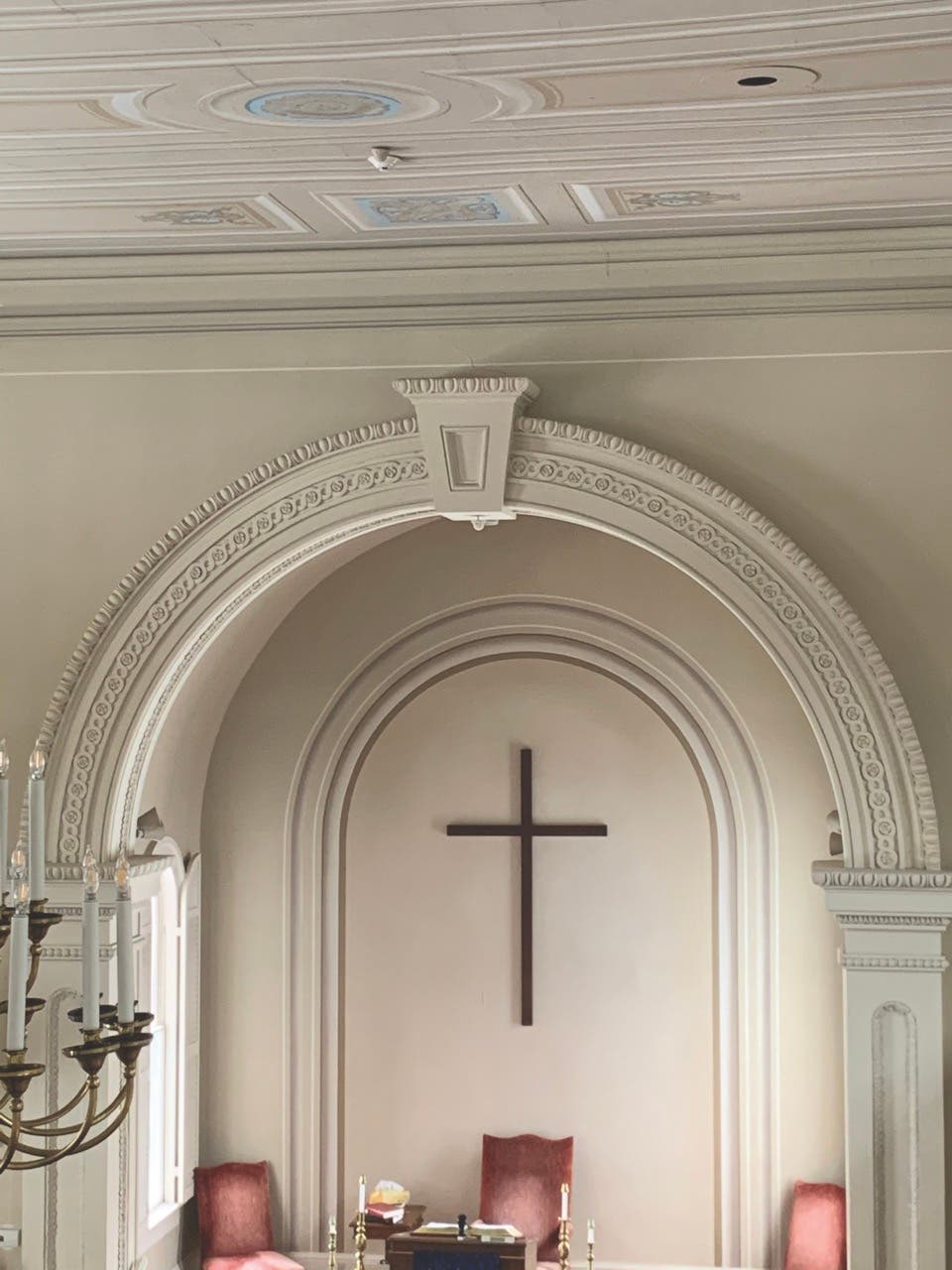
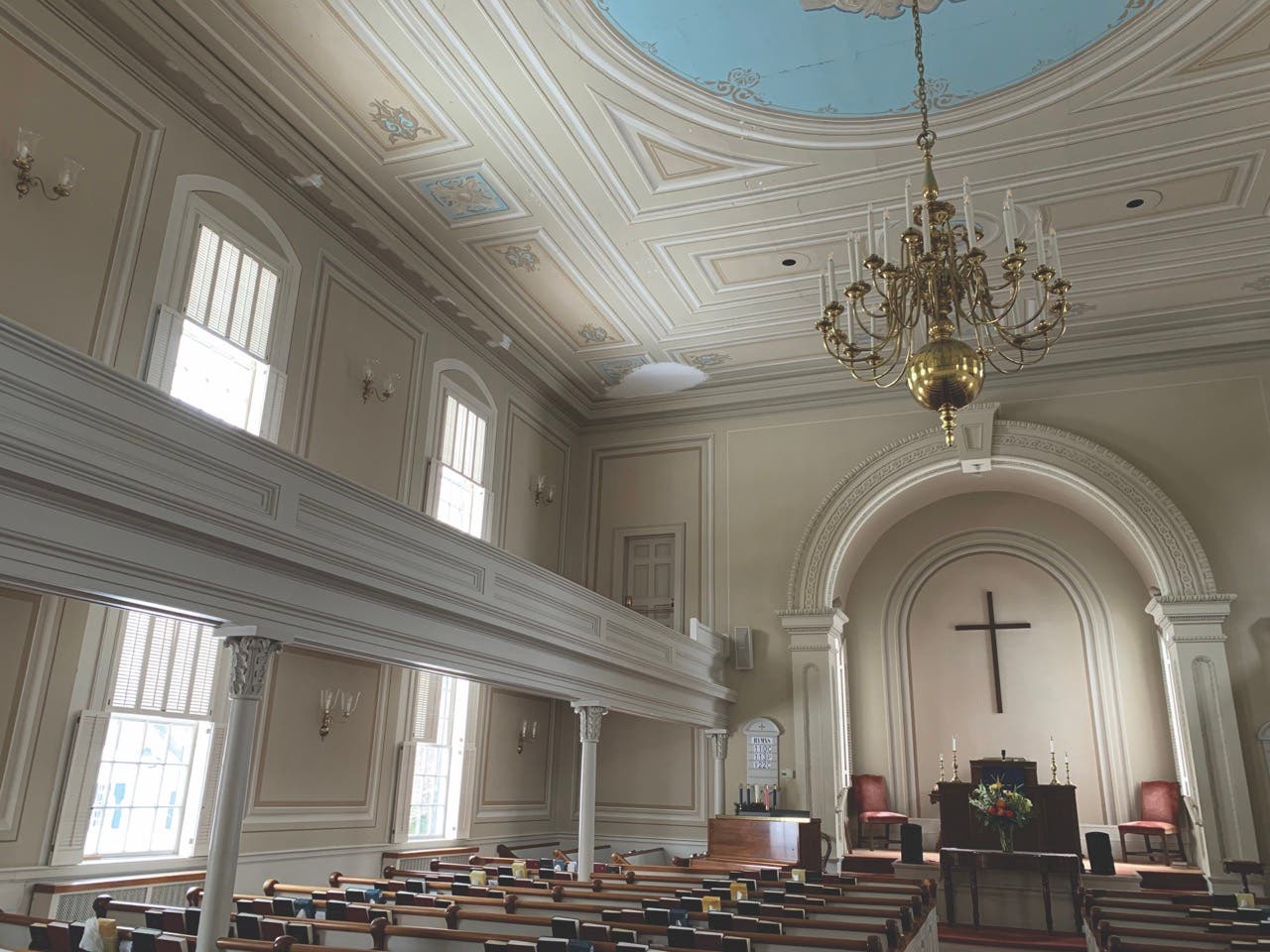
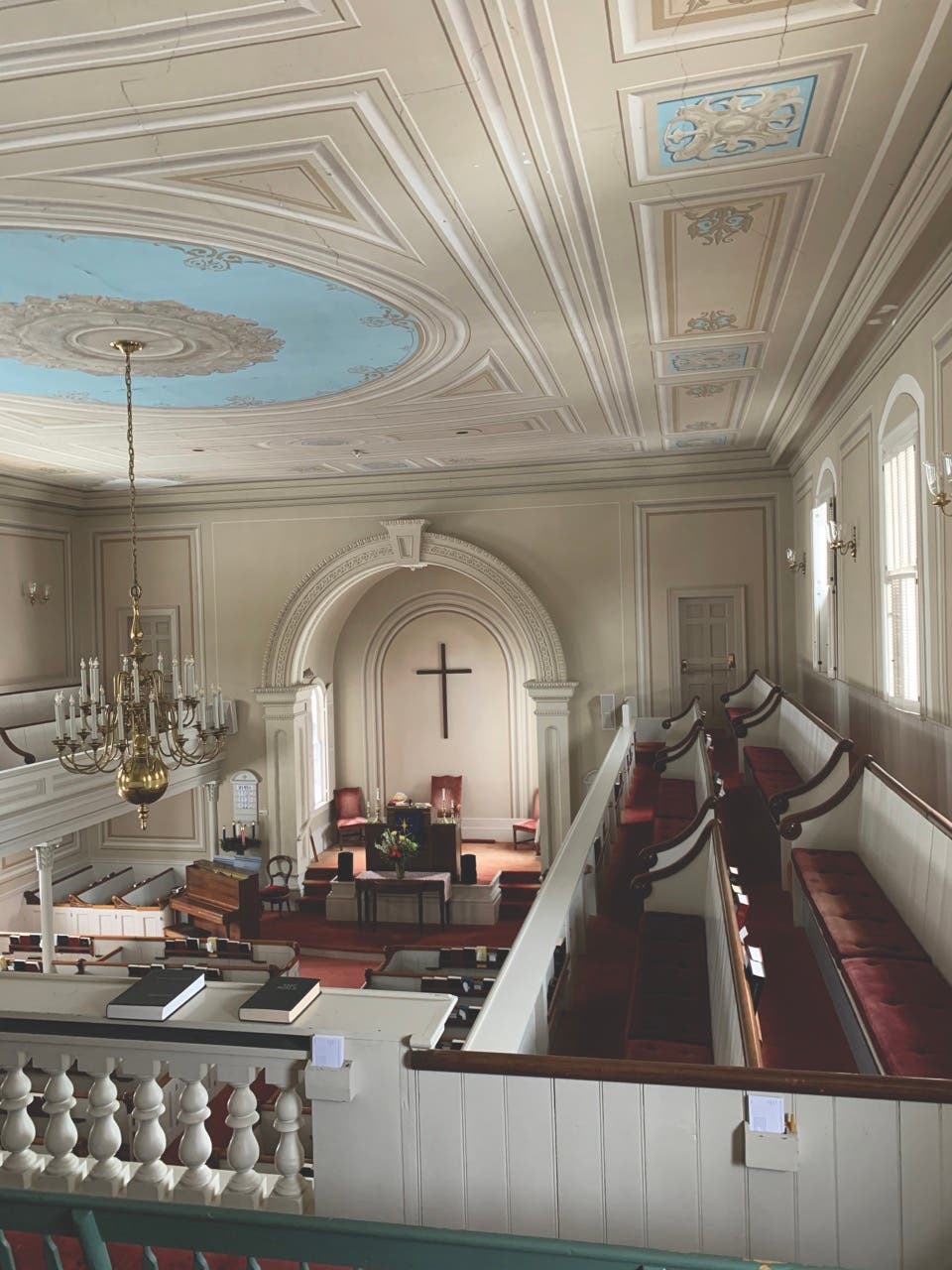
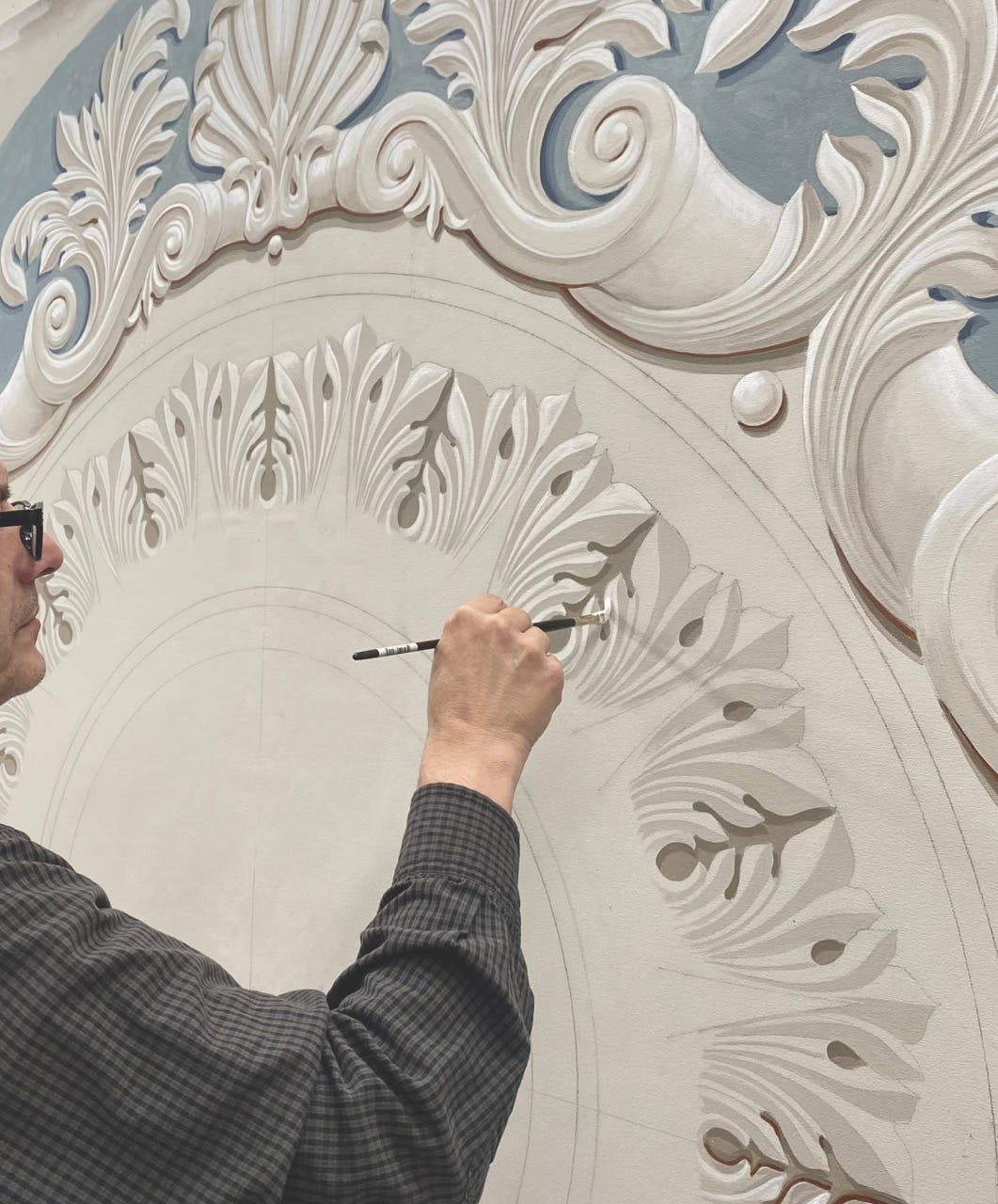
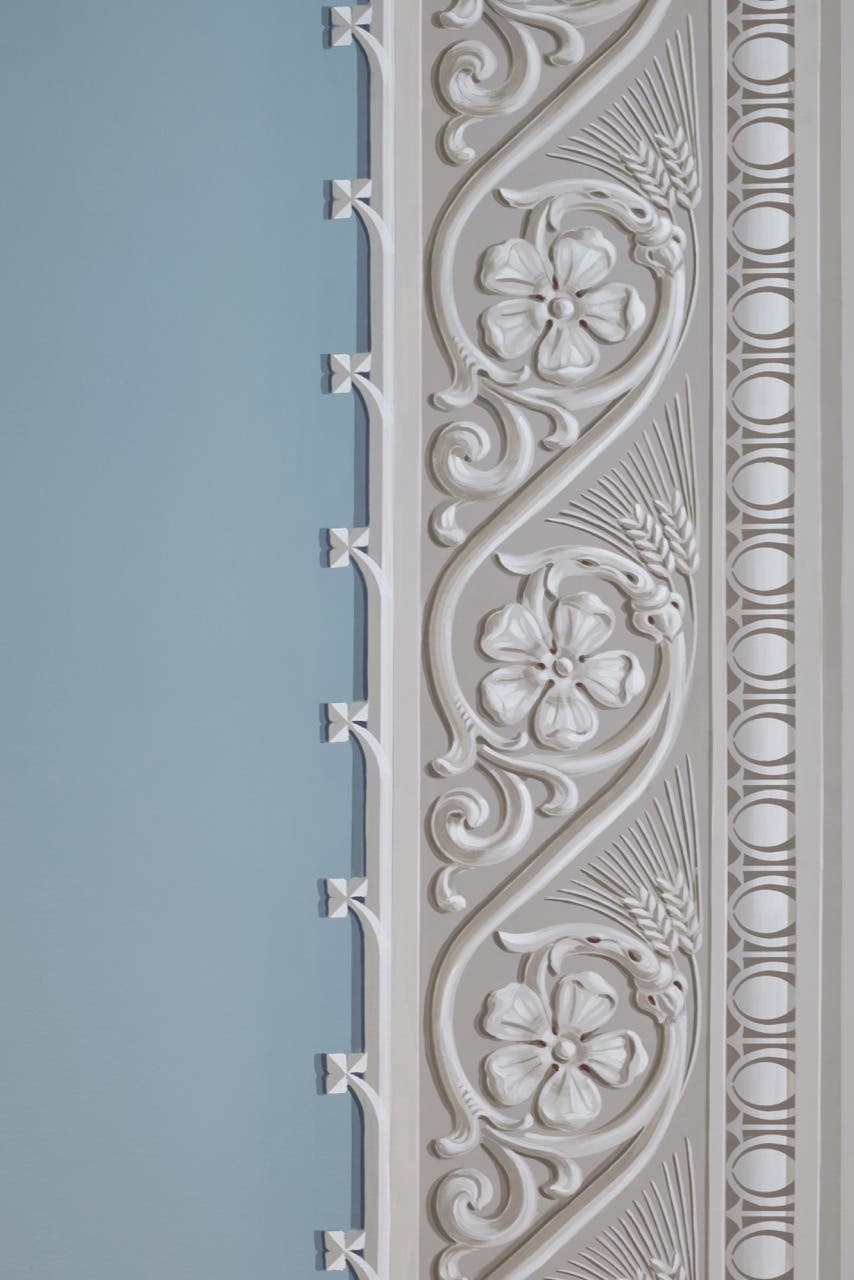

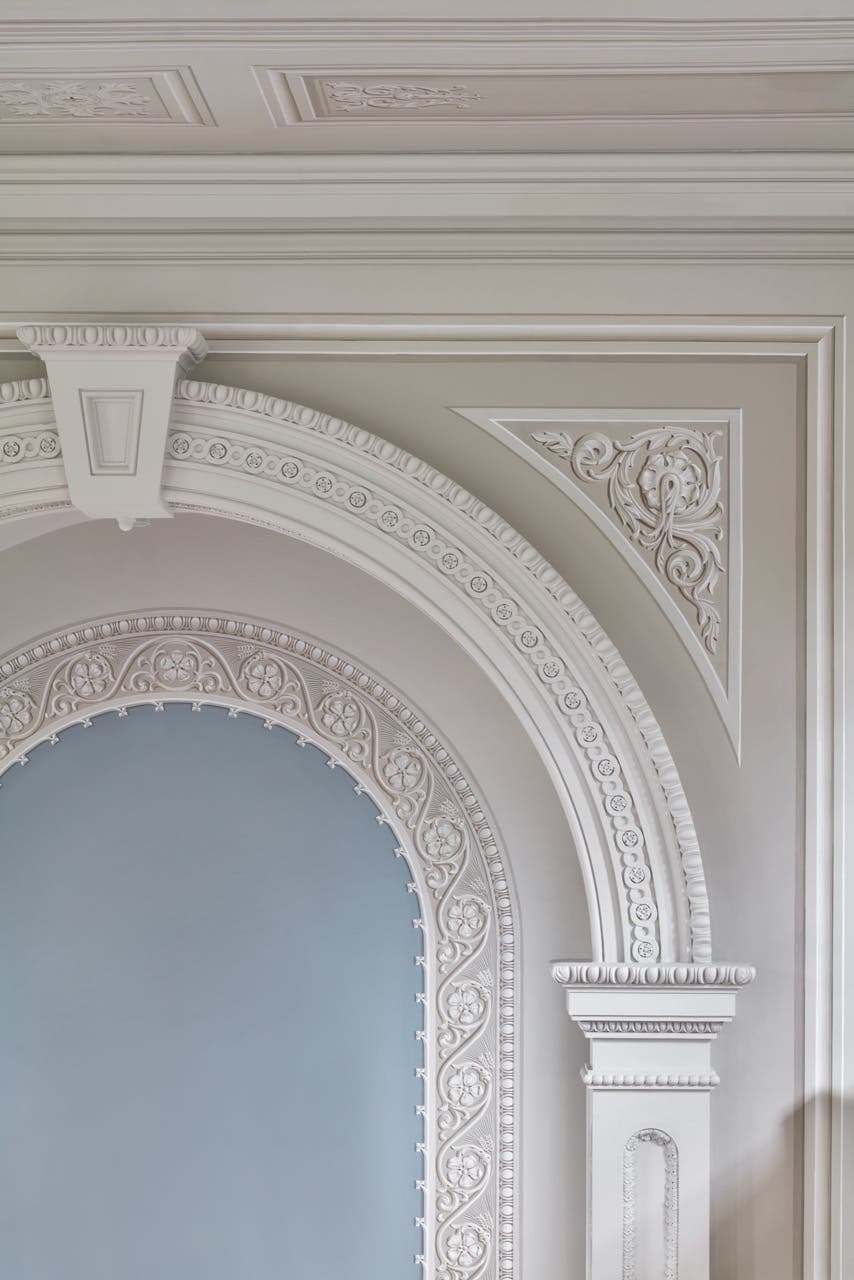
The project began in 2016 with structural remediation that included work safety plaster stabilization and consolidation.
By 2019, the church had asked Riccio and his team of artisans to embark upon what became a multi-phase restoration and repainting. This included repairing and restoring the trompe-l’oeil ceiling decoration, repairing and repainting the cornice and arch, and repairing and restoring the historic wall trompe-l’oeil panels on the north wall.
The congregation decided to do the artistic work after Riccio pointed out the beauty of the originals, which had been covered by a previous renovation, and part of which were becoming visible as the ceilings and walls began delaminating.
“They assumed the 1980s style was their only option, believing no contemporary artisans possessed the skill to authentically restore the original decoration.” he says.
The latest images had been painted in a trompe-l’oeil/grisaille style in a beige and gray color scheme with accents of sky blue at decorative medallions and motifs at the ceiling.
An analysis, however, revealed five color schemes. The original was executed in a distemper paint, and later campaigns were likely done in an oil or emulsion paint directly over the distemper.
Because of this, uncovering the second scheme was difficult chemically as well as mechanically. However, Riccio was ultimately to exposure original decoration & and patterns at the ceiling and walls. The fourth campaign was inspired by the third campaign in color and style. The final campaign, by A.R. Chorney Inc., only varied from the previous one in details such as the width and location of the striping, shadows, and highlights.
“Analyzing and understanding the history of the finishes served as a guide in providing the congregation with recommendations for restoration and redecoration,” says Riccio, adding that the team produced samples and full-on models to show the congregation. “We were working with a limited palette of blues and grays. We don’t pick colors from commercial shade cards; instead, we use one color for the trompe l’oeil and intermix with white and raw umber to adjust brighter and deeper values for complete harmony in the color palette.”
The interior of the church is blissfully immersed in illusionism. Decoration fills the walls as well as the ceilings. Large trompe-l’oeil panels on the side of the walls between the clear-glass windows and at the north wall flanking the pulpit recess span the height of the interior, unbroken by the balcony.
The ceiling’s illusionistic decoration is arranged around the richly decorated plaster centerpiece for the brass chandelier. The centerpiece is set in a trompe-l’oeil rosette of scrolling leaves, resting on a circular ground of muted light blue, and framed by a broad trompe-l’oeil molding.
The composition around the chandelier space includes framed panels at the front and back with blue color grounds and central medallions and a pattern of rectangular and square coffers around the perimeter with grisaille floral accents.
“All these decorative panels, both on the ceiling, above the windows, and beside the entrance door, were created on canvas with painstaking precision in our studio and installed at the church in a feat of skillful traditional craftsmanship,” Riccio says.
Creating the three-dimensional illusions correctly is a precise science that includes the study of light, shade, and the light sources.
“The challenge is to capture the subtleties of the room and built architecture,” Riccio says. “To create the three-dimensional quality, you have to align the highlights and shadows, and you have to understand how and where the light hits the ‘molding profiles.’ There has to be a natural balance of highlights and shadows.”
By 2023, the First Church of Christ had been restored to the state of beauty and spiritual peace envisioned by the worshippers.
Riccio notes that the congregation is “overwhelmingly grateful” for the restoration work, with many regarding the church as a leading example of Greek Revival architecture in New England.
This has instilled a deep sense of pride, he says, in their connection to the congregation, the building itself, and the broader preservation initiatives in greater New Haven, his hometown. TB

